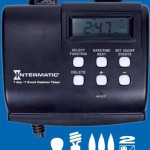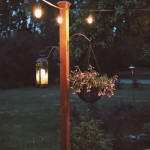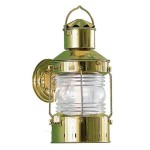How to Grow an Herb Garden Outdoors in Pots
An herb garden is a wonderful addition to any outdoor space, offering a plethora of culinary and medicinal benefits. Growing herbs in pots offers several advantages, including convenience, portability, and greater control over growing conditions. With careful planning and consistent care, you can cultivate a thriving herb garden in your own backyard or patio.
Choosing the Right Pots and Location
The first step to creating a successful herb garden is to select appropriate pots and a suitable location. When choosing pots, consider the size of the herbs you plan to grow and their root systems. Most herbs thrive in pots with a diameter of at least 12 inches. Ensure that the pots have drainage holes to prevent waterlogging. Terracotta pots are a popular choice for herb gardens, as they allow excess moisture to evaporate. However, plastic pots are also a viable option and can be more durable.
The location of your herb garden is equally important. Choose a spot that receives at least six hours of direct sunlight per day. Most herbs require ample sunlight to thrive. Avoid planting herbs in areas that are prone to strong winds, as this can damage their foliage and stems. Additionally, consider the proximity of your herb garden to your kitchen or cooking space for easy access.
Selecting and Planting Herbs
Once you have chosen your pots and location, it's time to select the herbs you wish to grow. Consider your culinary preferences and the growing conditions in your area. Some popular herbs for outdoor pot gardens include basil, thyme, rosemary, oregano, mint, chives, and parsley. When choosing herbs, be mindful of their growth habits and space requirements. For example, mint is a vigorous grower and may require a larger pot to accommodate its spreading roots.
When planting herbs, it's crucial to use high-quality potting mix. Choose a mix that is well-draining and rich in nutrients. Fill the pots with the potting mix, leaving a few inches of space at the top. Make a hole in the center of the pot for each herb, ensuring that the hole is large enough to accommodate the root ball. Carefully remove the herb from its container and gently loosen the roots before placing it in the hole. Firmly pack the soil around the base of the plant and water thoroughly.
Watering and Fertilizing
Watering is crucial for maintaining the health of your herb garden. However, overwatering can lead to root rot, so it is essential to strike a balance. Allow the top inch of soil to dry out between waterings, then water deeply until water drains out of the drainage holes. During hot and dry periods, you may need to water more frequently.
Fertilizing your herbs can enhance their growth and flavor. Use a balanced fertilizer specifically formulated for herbs, or opt for organic options like compost tea or fish emulsion. Apply fertilizer every 4-6 weeks, following the instructions on the product label.
Pest and Disease Control
Herb gardens can be susceptible to pests and diseases. Regular inspection can help you identify and address problems early on. Common herb pests include aphids, whiteflies, and spider mites. Insecticidal soap or neem oil can be effective against these pests. If you notice any signs of disease, such as leaf spots or wilt, isolate the affected plant and consult a gardening expert for guidance.
Harvesting and Storage
Harvesting herbs at the peak of their flavor is essential for enhancing your culinary creations. Cut off stems just above a set of leaves to encourage new growth. The best time to harvest herbs is in the morning, after the dew has dried but before the sun becomes too intense. For herbs with delicate leaves, such as basil, it's best to pinch off leaves as needed.
To preserve your harvested herbs, you can dry them, freeze them, or store them in the refrigerator. Drying herbs can be done by hanging them upside down in a cool, dark, well-ventilated space or by using a food dehydrator. Freezing herbs is a convenient way to preserve their flavor. Simply wash and dry the herbs, chop them, and place them in airtight containers in the freezer. For refrigerator storage, wrap the herbs in paper towels and store them in airtight containers.

Ideas For Growing Herbs In Pots Garden Gate

The 7 Best Herbs For Container Gardening

How To Grow Herbs In Containers Gardener S Path

How To Grow Herbs In Containers Gardener S Path

Growing Herbs In Pots Bbc Gardeners World

The 7 Best Herbs For Container Gardening

How To Grow Herbs In Containers Gardener S Path

How To Plant A Herb Garden In Pots Planters And Windowboxes David Domoney

How To Plant An Outdoor Herb Garden Pot Setting For Four Interiors

Grow Your Own Perennial Herb Container Garden Therapy
Related Posts







